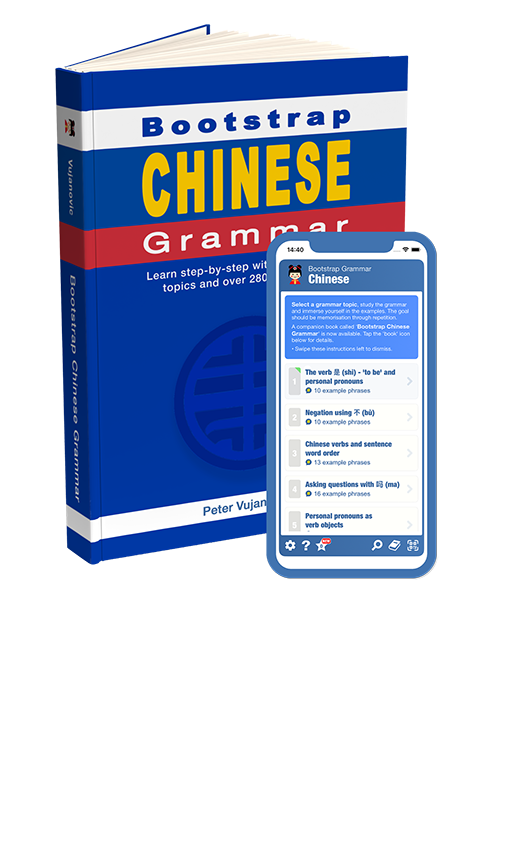Chinese grammar - The counter or measure word 个 (gè) |
|||
|
|||
In Chinese 'counters' or 'measure words' (also known as 'classifiers') are words used to specify the type and number of a noun. As we saw previously, nouns are typically not marked as plural in Chinese. It is these counters that serve to specify the number of nouns (whether singular or plural). There are numerous counters in Chinese, depending on the type of object being counted, according to its shape, function, or other characteristics. The most common counter is 个 () which is used for people and many other objects. — In addition to people, 个 is used as a counter for round fruits, days, countries, cities, houses and questions. — It is also the default (genera)l counter that is used when the exact type of noun being referred to is unknown. Note that when we use a counter for two objects, rather than 二 () we use the special numeral 两 () |
| Examples: | |
|
一个人
yí gè rén one person |
|
|
两个人
liǎng gè rén two people
|
|
|
三个苹果
sān gè píngguǒ three apples |
|
|
四个橙子
sì gè chéngzi four oranges |
|
|
五个柠檬
wǔ gè níngméng five lemons |
|
|
六天
liù tiān six days
|
|
|
七个国家
qī gè guójiā seven countries
|
|
|
八个城市
bā gè chéngshì eight cities
|
|
|
九个问题
jiǔ gè wèntí nine questions |
|
|
十个学生
shí gè xuéshēng ten students |
|
|
十一个中国人
shíyī gè zhōngguó rén eleven Chinese people |
|
|
十二个美国人
shíèr gè měiguó rén twelve Americans |
|
 |
|


 Rather than
Rather than 
